ASTANA – Bike for Peace, a global nuclear disarmament movement from Norway, is eager to foster cooperation with Kazakhstan, said Bike for Peace President Tore Naerland in an interview with The Astana Times.

Naerland and Assel Satubaldina durind the interview. Photo credit: The Astana Times
Naerland and the delegation from Norway were on a week-long visit to Kazakhstan April 13-22, meeting with senior officials and young people to explore how the organization can cooperate with Kazakhstan, a nation that has played a significant role in global nuclear disarmament efforts after voluntarily renouncing its Soviet-inherited nuclear weapons in 1991.
“What we want from this visit is to network and learn about the work that Kazakhstan does against nuclear weapons. We have many plans for the future, including a peace ride,” said Naerland. “We will cooperate more with Kazakhstan against nuclear weapons worldwide because Kazakhstan is leading on this issue, and can’t be compared with any other country. I love Kazakhstan not only because of its culture but because of your battle against this issue,” he said.
Naerland founded Bike for Peace in 1977 with Helge Hundeide, with their first international bicycle tour taking place in Northern Ireland, where they biked together with catholics and protestants for peace, said Naerland.
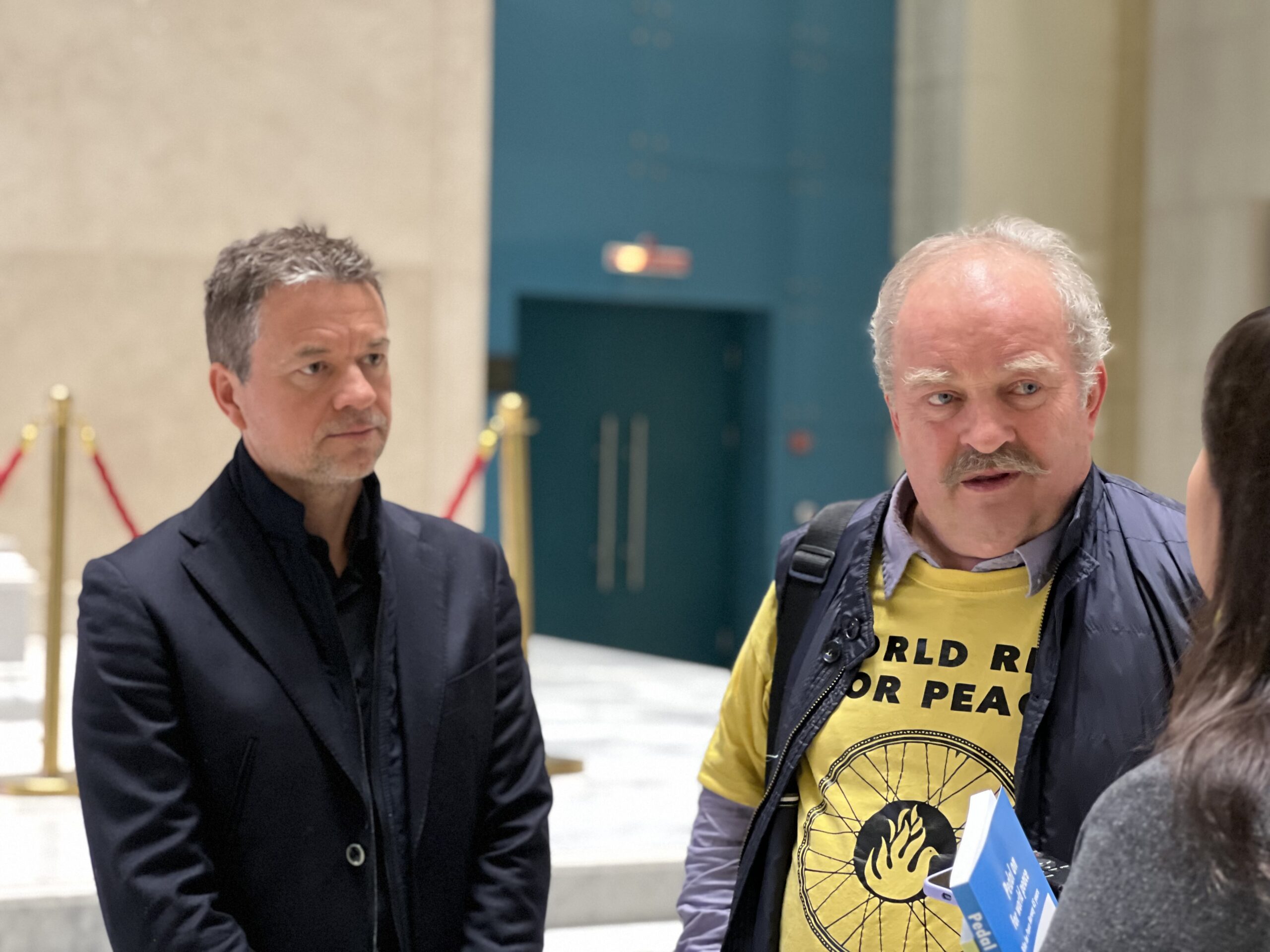
Tomlinson and Naerland durind the interview. Photo credit: The Astana Times.
“When I was 15 years old, I was good at football, and dreamt of becoming a professional football player. But one day, I woke up with a bad feeling in my head, realizing I couldn’t see with my right eye. Two months passed and [I could only see with] my left eye. I lost my vision. I thought, what will I do with my life? Someone told me, ‘Tore, don’t think about bad eyesight. You can do so many other things with your life.’ He said, go and help people,” said Naerland.
While biking around the world, he met a woman in Hiroshima, a victim of a nuclear bomb, which encouraged Naerland to redirect the focus of his rides to nuclear disarmament.
“That lady changed my life because she was blind as a result of the first nuclear bomb [dropped on Hiroshima]. She said, ‘it is very good that you bike for disabled people, but you should bike against nuclear weapons,’ and that’s what I have been doing since 1979,” he said.
“We organized the first international ride from Moscow to Oslo and New York to Washington, D.C. in 1993. At that time, there were 80,000 nuclear weapons, and today there are 13,000,” said Naerland.
Since 1977, Bike for Peace has organized peace and friendship rides in more than 120 countries.
“We mostly focus on nuclear states like Russia, America, France, England, and China. We will have a bike ride in Pakistan and India next year. We will want to have people from Kazakhstan with us because other countries have to learn from your example,” he said.
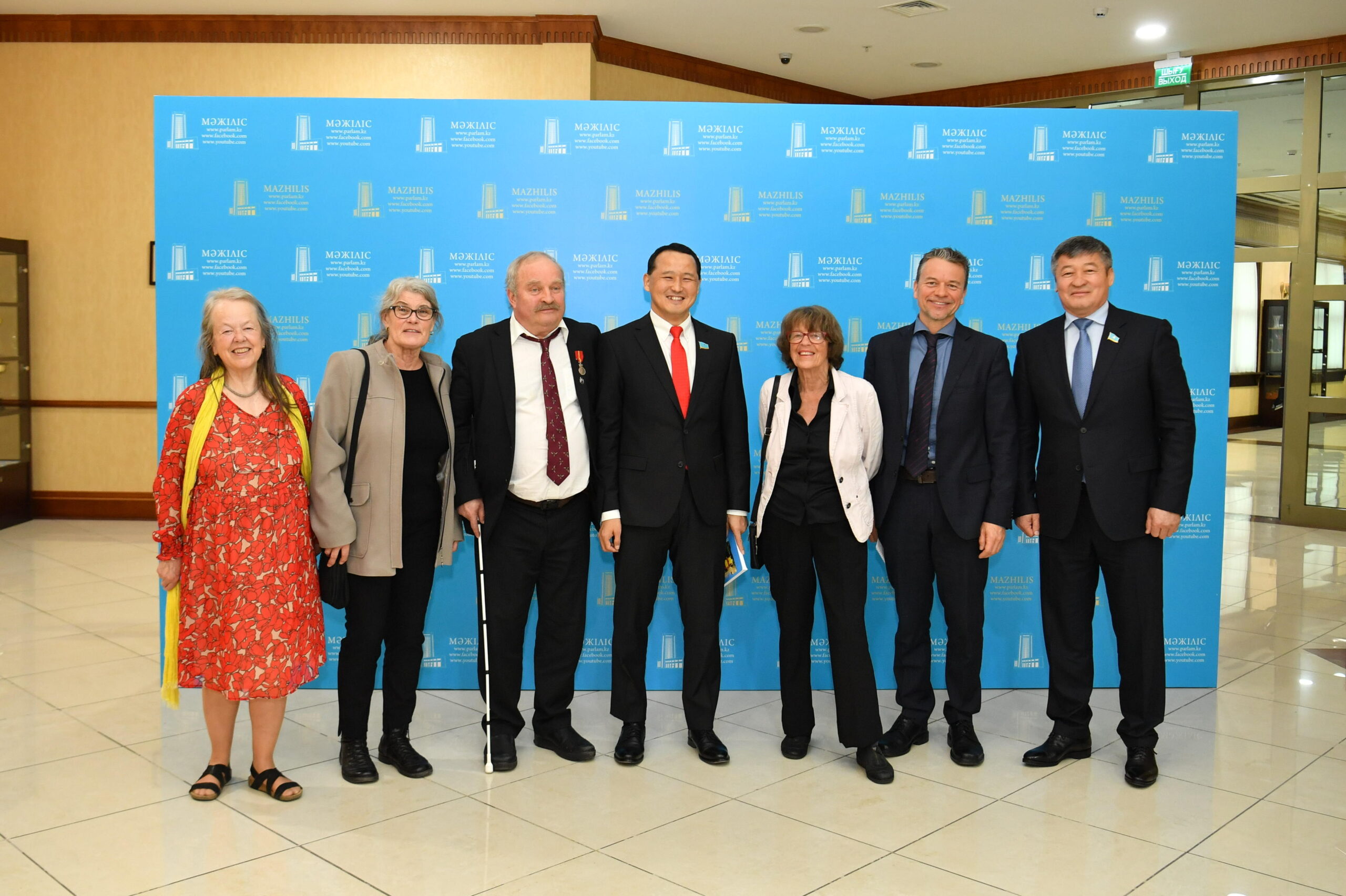
The delegation met with deputies of the Mazhilis, a lower chamber of the Kazakh Parliament, on April 14. Photo credit: parlam.kz
The cooperation between Kazakhstan and Bike for Peace has spanned since 2011, when the organization launched a multi-day bike ride along the Semei-Almaty-Astana route to mark the 20th anniversary of the closing of the Soviet Union’s Semipalatinsk nuclear test site.
“When we were here in 2011 for a peace ride through Kazakhstan, we started in Semei on Aug. 6, the day of the Hiroshima bomb. We ended in Astana on Aug. 29, which is the International Day against Nuclear Tests. Kazakhstan [has suffered] the most consequences of nuclear weapons,” Bike for Peace Vice President Frank Tomlinson told The Astana Times. “One of our dear friends, Karipbek Kuyukov [a Kazakh painter born without arms as a result of exposure to nuclear radiation from Soviet nuclear testing], makes paintings based on his experience and life. These things are very valuable for the world to see because many people still live with the idea that nuclear bombs belong to the Cold War period. It is not something that protects us but what destroys us.”
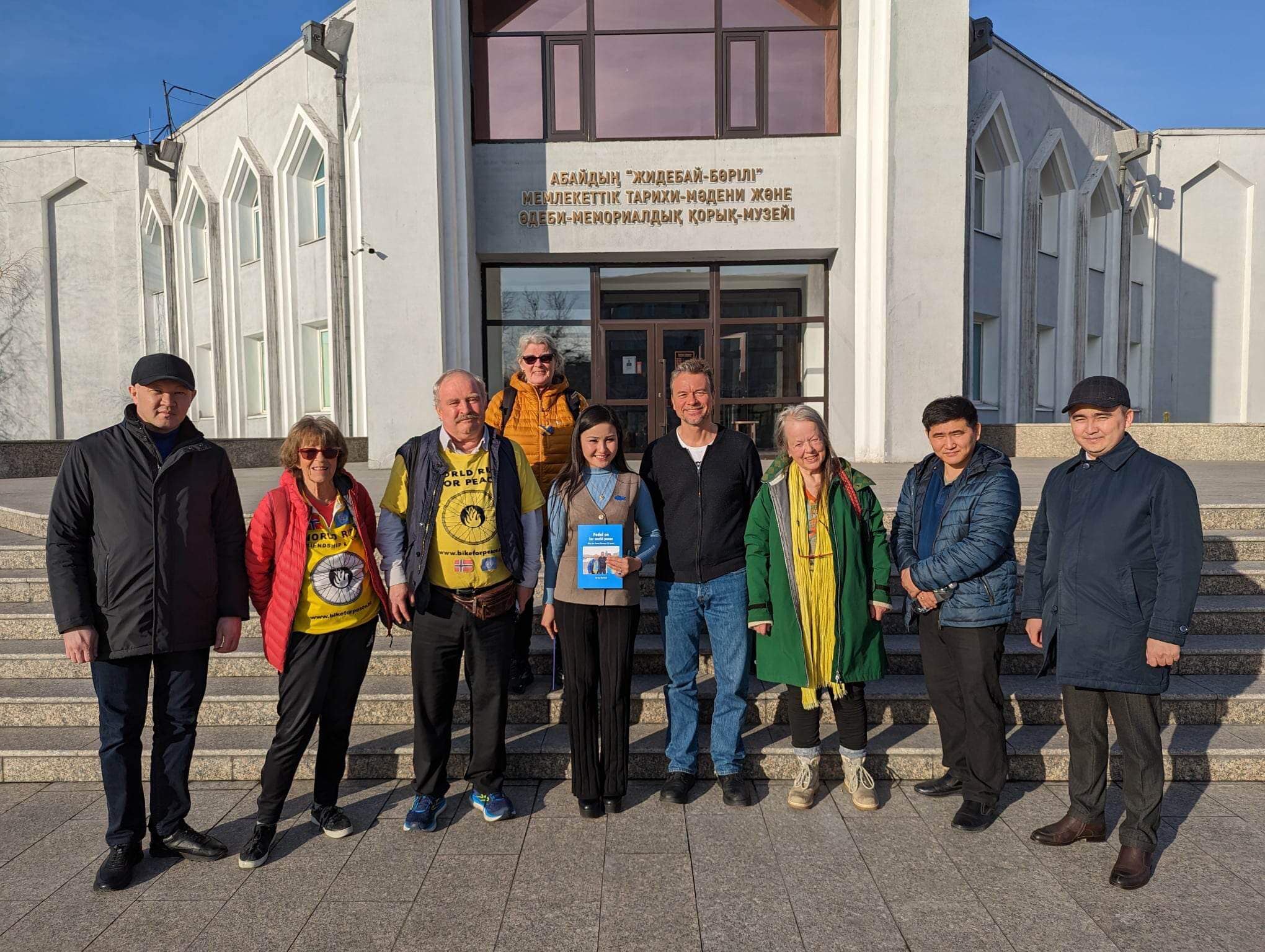
The delegation visits the Abai museum in Semei. Photo credit: Tore Naerland’s Facebook page.
Naerland recounted his first visit to Kazakhstan in 1999.
“That was the first time I visited Almaty to plan a bike ride all the way from China to Norway. We biked from Beijing to Xi’an on the Silk Road to Urumchi, where many Kazakhs live, and from there to Kazakhstan on April 29, where we traveled from Almaty to Astana, which was not a big city then. From there, we visited Shchuchinsk, the hometown of Vladimir Smirnov [a Kazakh former cross-country skier and Olympic champion], then to Chelyabinsk and Nizhniy Novgorod in Russia, followed by Moscow, St. Petersburg, Helsinki, Stockholm, Oslo, and Bergen,” he said.
In 2015, a Washington-New York bike ride was organized to spread the message of peace and nuclear disarmament, with the support of Kazakhstan’s ATOM Project and the participation of Karipbek Kuyukov and Vladimir Smirnov.
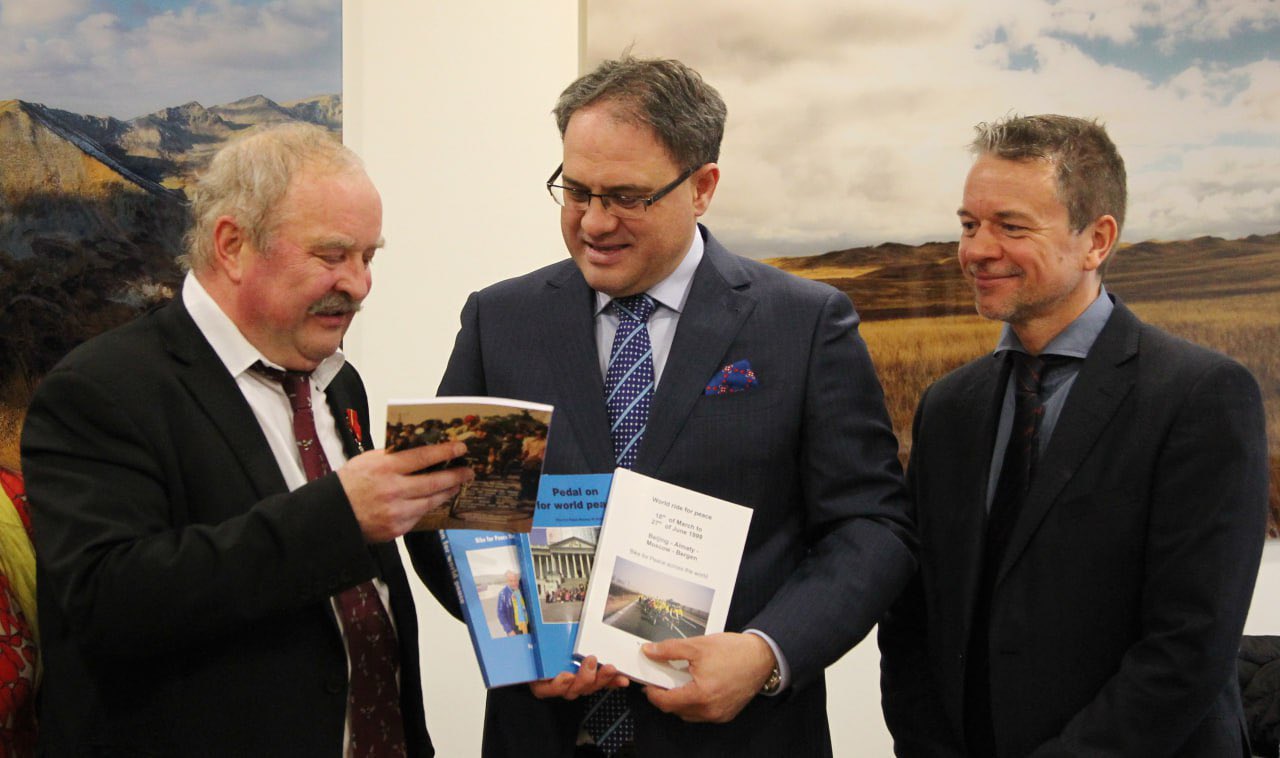
Naerland, Vassilenko and Tomlinson during the meeting. Photo credit: Kazakh Foreign Ministry.
“We have met many people in Semipalatinsk. People in Kazakhstan inspire me. 450 nuclear bombs were detonated both in the atmosphere and underground [in Semipalatinsk], which affected 1.5 million people there,” he said.
As part of his visit this time, Naerland met on April 14 with Deputy Foreign Minister of Kazakhstan Roman Vassilenko. They exchanged views on nuclear disarmament and the nonproliferation of weapons of mass destruction. Vassilenko briefed the delegation on Kazakhstan’s efforts to achieve a nuclear-weapon-free world by 2045, the centennial of the founding of the United Nations.
On April 17, the Norwegian delegation met with students from the Eurasian National University in Astana, where Naerland spoke about what young people can do to address acute problems.
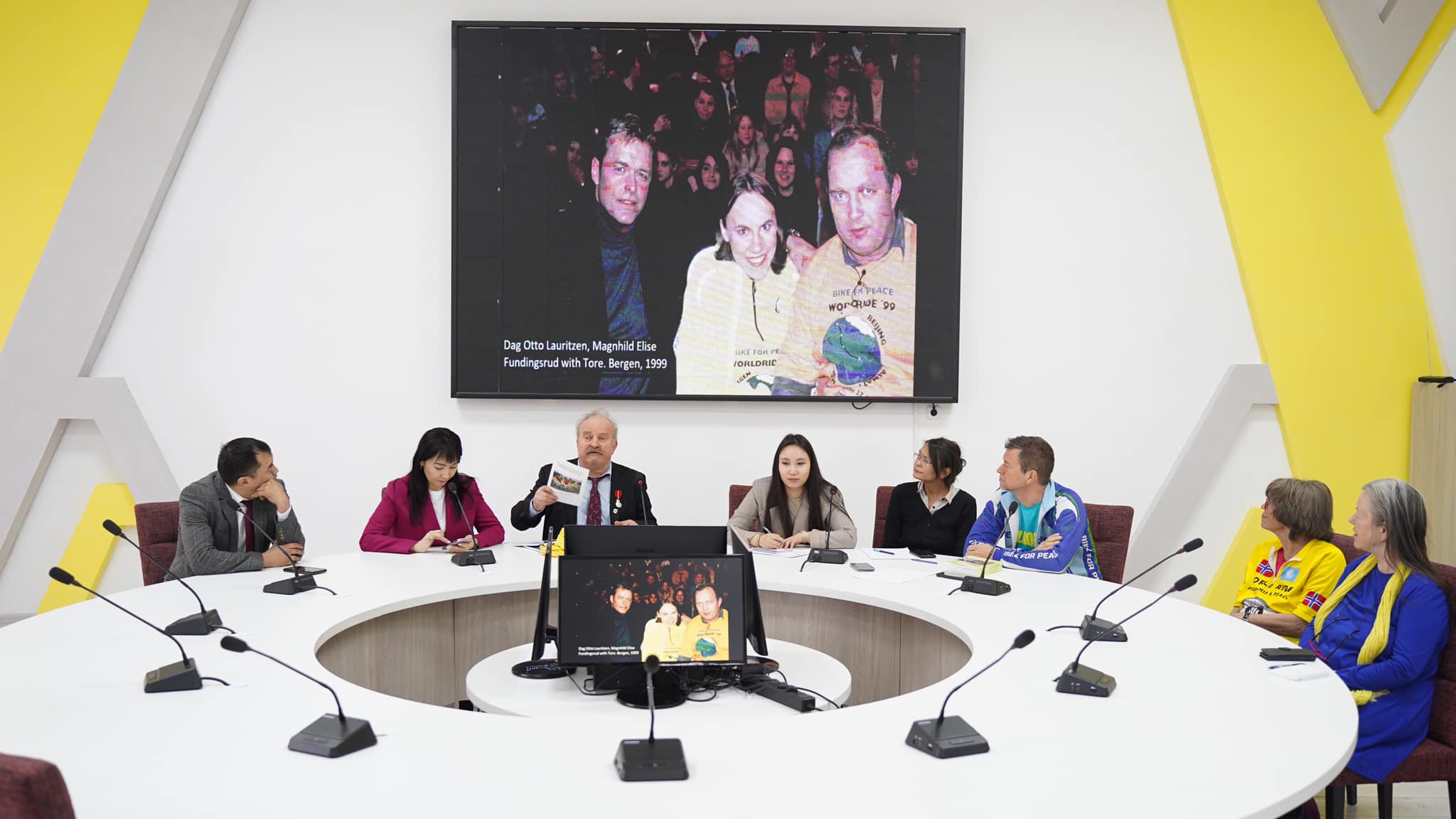
Naerland at Shakarim University in Semei. Photo credit: Tore Naerland’s Facebook page.
“It was a great meeting. Students made many comments and asked so many questions. One of the best universities I’ve been to in the world and I visited a lot,” he said.
Naerland is optimistic about the goal of achieving a world free of nuclear weapons.
“Two weeks ago, I was in Stavanger [a city in Norway]. We had a campaign near my hometown, giving out leaflets to people. I met people from Ukraine, and asked them, ‘Would you have had more security if you still had nuclear weapons,’ and they said no. If you have nuclear weapons, what can you use them for? If you drop a bomb, it is a catastrophe for the whole world,” he said.
He commended Kazakhstan’s robust efforts in nuclear non-proliferation and disarmament.

The delegation and Al-Farabi Kazakh National University Students pose for a group photo after the lecture. Photo credit: Tore Naerland’s Facebook page.
“When you became independent from the Soviet Union, you had 1,500 nuclear weapons. You dismantled all of them. This is an example for the rest of the world. [Former U.S. President] Obama said in his speech in Prague in 2009 that we should get rid of nuclear weapons. What did he do when he was the President of the United States? He increased the nuclear program and he got the Nobel Peace Prize. It is Kazakhstan which should have gotten the Nobel prize, because you got rid of nuclear weapons,” said Naerland.
After their visit to Astana, the delegation traveled to Semei and Almaty. In Semei, they visited Shakarim University and Semei Medical University. They also visited schools, including a boarding school for children with visual impairments.
In Almaty, Naerland and the delegation gave a lecture at the Al-Farabi Kazakh National University and visited schools and the Shymbulak ski resort.

